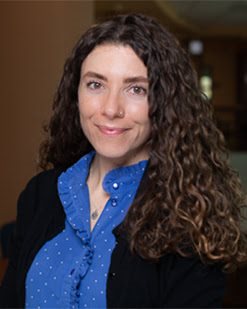Interventional Pulmonology Program
The National Jewish Health Interventional Pulmonology Program in Denver, Colorado, offers a wide range of minimally invasive diagnostic, therapeutic and palliative (symptom-relieving) airway procedures. Our interventional pulmonologists are fellowship-trained and have extensive experience performing minimally invasive procedures that help accurately diagnose patients with lung nodules and other lung concerns.
In partnership with Saint Joseph Hospital, National Jewish Health is among the first hospitals in the Rocky Mountain region to offer robotic bronchoscopy as minimally invasive option for patients with lung nodules and other lung concerns that need to be biopsied.
Learn more about Robotic Bronchoscopy Program
Our Services
- Identify, diagnose and treat pulmonary nodules
- Early detection of lung cancer
- Diagnose and treat airway obstructions due to benign and malignant diseases
- Airway recanalization with laser and other modalities
- Removal of foreign bodies
- Pleural disease management
- Management of advanced asthma and emphysema
Interventional Pulmonology Procedures
- Flexible bronchoscopy
- Endobronchial Ultrasound System (EBUS)
- Robotic bronchoscopy
- Rigid bronchoscopy
- Laser Bronchoscopy
- Electrocautery
- Argon Plasma Coagulation
- Balloon dilation
- Airway stent placement
- Endobronchial valve placement
- Bronchial thermoplasty
- Thoracentesis
- Chest tube placement
- Indwelling tunneled pleural catheter placement
Doctors
-

Sohini Ghosh, MD
-

Kristen Glisinski, MD
 Clinical Trials
Clinical Trials
- Healthy Adults Needed for Beryllium Disease Study
- Identifying Characteristics and Patterns of Asthma
- Investigational Gene Therapy for Adults with CF
- Lung Injury from Military Deployment
- New Trial Medication for Pulmonary Arterial Hypertension
- Predict and Prevent Lung Disease
- Pulmonary Fibrosis & Genetic Factors
- Skin, Airway & Esophageal Epithelial Barriers in Youth
Reasons to Choose National Jewish Health
- The leading respiratory hospital in the nation and the only one devoted fully to the treatment of respiratory and related illnesses
- Ranked #1 or #2 in Pulmonology by U.S. News & World Report for 26 consecutive years
- Ranked in the top 5% of hospitals in the nation by HCAHPS
- Physicians consistently recognized among the best in the nation by multiple services, including Best Doctors in America and Castle Connolly
- Among the top 6% of organizations funded for research by the NIH, providing patients access to hundreds of active clinical trials
- 124-year history of focus on care, research and education serving patients from around the world with lung, heart, immune and related disorders

Team of Doctors Joins Couple to Battle Lung Cancer
Tag Team of Doctors Joins Couple to Battle Lung Cancer
Read More